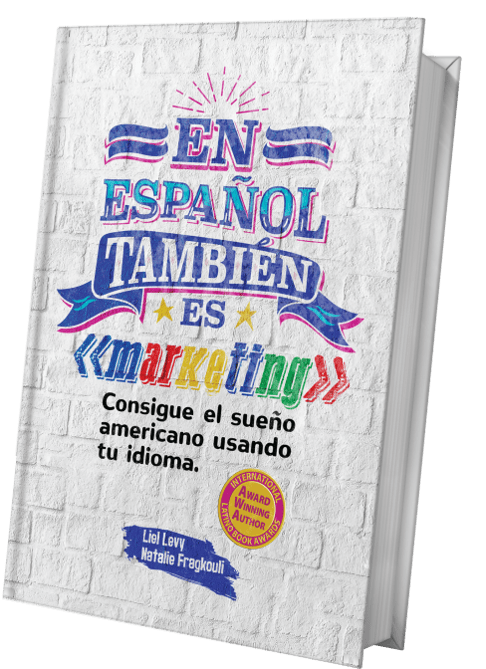Experts often compare Mass Torts to the stock market, due to the risk involved and the opportunities for profits and big returns. One of the most current and untapped opportunities for your Law Firm is the Talcum Powder Tort, and today we’ll explain why you need to get involved now.
In a previous article, we talked about the Top 7 Mass Torts to follow in 2020. One of the most prominent cases that we explored is the Johnson & Johnson Talcum powder, the Tort that we’re going to review today, looking into the most crucial details and making it ideal for your law firm to get involved right now. We’ll start with an overview of what can make a case viable, we’ll look into specific characteristics, we’ll review demographic criteria that could make Hispanics relevant, and we’ll give actionable tips on how to jumpstart your efforts.
- What is Talc, and what is the Mass Tort about?
Talcum powder has been used for years. Johnson & Johnson introduced it in its products over a century ago. Since then, uncountable consumers have bought and used products containing it. Its most common applications are in the face, body, baby powder, and other cosmetics such as toothpaste and soap. Problems for the colossal company started a few years ago when scientists realized that, in some cases, Talcum could be naturally contaminated with asbestos, which is related to mesothelioma. In this article, you can read more about Talcum powder and how it can be related to ovarian and fallopian cancer (among others).
- Talcum Powder as a Mass Tort
The strongest lawsuits are those that can tie prolonged use of the product with Ovarian cancer. In other words, women using Talcum powder for years and having been diagnosed with ovarian cancer have the best chances to build a successful case. Research conducted by the Texas School of Health, based in Houston, examined the interconnection and reported an increased risk for people with prolonged use.
- What’s the evolution of lawsuits?
Earlier this year, in May 2020, Johnson & Johnson announced that it would stop selling its Talcum powder-based products in North America. The company officially announced that it’s a business-related decision. Below you can find a part of the official announcement:
“Demand for talc-based Johnson’s Baby Powder in North America has been declining due in large part to changes in consumer habits and fueled by misinformation around the safety of the product and a constant barrage of litigation advertising.”
Let’s look at some of the events that followed this decision, and more specifically, at two milestone lawsuits.
In June 2020, a Missouri appeals court ordered Johnson & Johson (and one of its subsidiaries) to pay $2.1b in damages to women who had filed a lawsuit claiming that the company’s Talcum powder-based products, including the baby powder, had caused ovarian cancer.
According to Bloomberg’s report, in October 2020, J&J agreed to pay $100m to resolve more than one thousand cases blaming the companies Talcum-based products for cancers.
These two are only a few examples of lawsuits reaching a resolution or the courts. It’s reported that over twenty thousand cases are still pending, showing the need for awareness to people that might have been affected by the products and an opportunity to fight back for what’s right.
- Why does it specifically matter for Hispanics?
For years, J&J marketed its products, especially to minorities, more specifically to Black and Hispanic women. Executive reports show that the company’s marketing department considered these demographics ideal for expansion and increased sales as they’d fit more of their criteria and buyer persona. What does this mean in practice? That it’s probable to encounter bigger crowds within these demographics who can demonstrate prolonged usage of the involved products. What’s worth mentioning at this point is that a significant percentage is still not aware of the ongoing litigations and that they might have valid opportunities.
The problem, at this point, is not targeting specific audiences. That’s part of marketing, even more nowadays in the digital age. What we’re pointing out is advertising products that could be related to carcinogenesis.
Example: In 2017, a Los Angeles jury issued a $417m verdict in favor of Eva Echeverria. The plaintiff was diagnosed with ovarian cancer in 2007, and a surgeon removed her tumor. She used the J&J Talcum powder products for years, more specifically since the age of 11 and even after her diagnosis and surgery. She stopped in 2016, only after seeing a similar story of another woman associating her cancer with Talcum powder products. According to her words, she would’ve stopped using these products if there was a warning on the package.
How can your Law Firm use digital marketing for the Talc Mass Tort?
- Use the Google Display Network.
As stated above, one of the multiple issues we can find with the Talc Mass Tort is awareness. It’s a sensitive topic, but what if people knew earlier that there is risk involved with prolonged exposure to Talcum powder products? Or what if people who are currently using the baby powder haven’t heard of the potential dangers before? By using the Display Network, you can show banner ads to people who share specific characteristics. You can reach certain demographics (such as Hispanics) and create much-needed awareness. Firstly so that people are aware of the risks, hopefully, reach out to their doctors and potentially join the Tort. You could save lives as early detection is key when it comes to cancer.
- Use Facebook Ads.
Facebook can be a powerful tool for any Law Firm, organically, and with Ads. For the Talc Mass Tort, you can use organic posting for awareness, paired with sponsored posts. Additionally, you can get into Facebook Ads and look into the localization options it offers. That way, you can find specific areas related to the Tort (such as doctors) and try targeting people who visited them.
Search volumes show a consistent interest with over 10.000 search queries since the beginning of 2020. These might be people in the research stage or people who might share common characteristics and want to get in touch with your Law Firm to understand if they have an opportunity with the Tort. With Google Ads, you can effectively target Hispanics, they search online, and they are more likely to click on Ads when they find what they need.
- SEO (Search Engine Optimization).
We consider the first three options more suitable for the Talc Mass Tort, as the opportunity is now, and SEO requires time before it can yield results. However, you can create an SEO strategy, including unique and original content to complement your SEM efforts. That way, you can increase your chances of attracting more prospective clients through a holistic approach.
- Email marketing.
You can look into your past and current clients and find out people who might be interested in knowing more about the Talc Tort. They might not be aware of the ongoing lawsuit or don’t know that you can assist them with this specific case.
Johnson & Johnson has stopped selling Talcum powder-based products in North America, meaning that cases are limited to people who can prove to have been using it for a prolonged period till it stopped being available. That means that your Law Firm’s chance to get new prospective clients for the Talc Tort is now.
What are our key takeaways:
- Experts associate Talc with Ovarian cancer, and women who can prove prolonged use and carcinogenesis can have a valid lawsuit.
- J&J marketed the products to specific demographics, including Hispanics. Therefore, they can represent an audience worth creating awareness.
- If you are looking to get in the Talc Mass Tort and increase your caseload with such cases, bilingual PPC is your go-to choice as it can generate fast and effective results. Complementary, you can create a holistic strategy including SEO.





